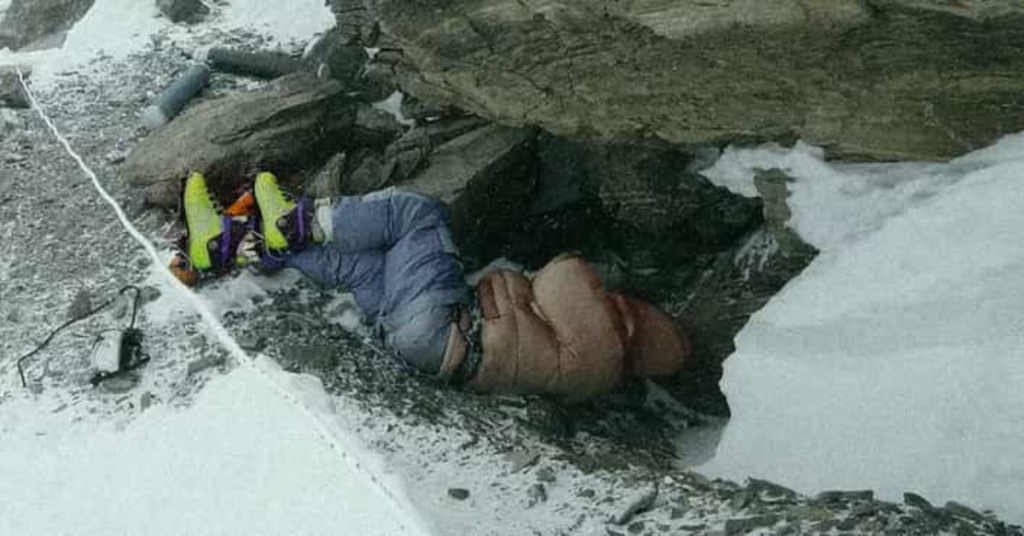Rainbow Valley Mt Everest: The True Story Behind Its Name
Rainbow Valley in Mount Everest, known as Sleeping Beauty, is one of the Khumbu region’s most beautiful yet deadliest parts. It takes one with expertise and bravery to get past the area. Likewise, not everyone can get through the lethal nature of Rainbow Valley. However, it is best known for its snowy beauty, which ultimately becomes the highlight of the Mount Everest region. From blue and clear skies to wild glacial pathways, you are in for a ride if you want to visit Rainbow Valley in Everest anytime soon.
There have been several mountaineers or adventurers who have made an attempt to get through the valley and have failed in their tries. Hence, so much is there to learn about this valley before he braces himself to the trek’s dangers and challenges.
Where is Rainbow Valley on Everest?
There has been an increase in mountaineers who have wished to explore Mount Everest and areas left unclimbed and unexplored for several years. Among these isolated regions, Rainbow Valley is a popular one. For those wondering where the Rainbow Valley is in Everest, it is situated above 8000m(26,247ft). Anywhere you go above this height is considered a death zone. There is no exact valley for you to consider other than the height.
The higher you go, the closer you come to the death zone. It is hazardous to reach a height beyond 8000 m above sea level on Mount Everest. At this point of the mountain, there is a record of 200 confirmed deaths. As for the deaths that have not yet been recorded or confirmed, the number is higher. Getting lost after crossing the Rainbow Valley is not surprising, given the mountaineering history on Mount Everest.
What to Expect in the Death Zone of Everest?
The first and foremost thing to do is buckle up with all the precautions. The lack of oxygen in the air can cause serious physical and mental impairments, and prolonged exposure can lead to death. At these high altitudes, the body’s ability to acclimatize to the thin air is significantly reduced, and even the most fit and experienced climbers can experience extreme fatigue, dizziness, and difficulty thinking clearly.
The thin air can also cause a variety of other physical problems, such as headaches, shortness of breath, and swelling of the hands and feet. In addition to the physical challenges, the death zone on Everest is also a very isolated and extreme environment, with extreme temperatures and harsh weather conditions. Climbers must be prepared for the possibility of frostbite, hypothermia, and other cold-related injuries.
Bodies in Rainbow Valley Everest: Reasons Why They Are Piling Up With Time

In the past, there was less awareness about mountaineering activities on Mount Everest. With globalization and awareness about adventure, more people are looking to explore deadly and adventurous locations. In this process, many have been the victims of the deadliness of Rainbow Valley Everest. Mount Everest is the last place on Earth where you’ll find a safe space to rest or settle during the journey. A small moment of mishap can lead to death. As it has been said for almost a century, the mountain is ruthless and never forgiving. You can be trying your best to keep yourself safe and alive, but you’re just as likely to suffocate to death in the Rainbow Valley.
As colorful as the name of the death zone sounds, the location contradicts its name. Further, in the past, there used to be fewer mountaineers who would come to Mount Everest. Many have died and disappeared in the peaks, and the count is still on. There used to be fewer bodies in the past, as mountaineering had just about gotten popular after the 1950s. As of the current time, the bodies are piling up as more have been added to what already existed in the past.
Read More: Ztec100.com Tech Health and Insurance
Experiences of Climbers Who Have Visited the Rainbow Valley
If you’ve ever wondered what it would be like to visit the Rainbow Valley, you’re not alone. Before you have experienced the death zone, many climbers can share their first-hand knowledge.
The stories of these brave souls are as varied as the colors of the rainbow. Some climbers have described it as an ‘otherworldly experience,’ surrounded by a stunning array of colors and feeling a sense of peace and awe. Others have said that being in the Rainbow Valley is like entering another world where time stands still and life slows down to a crawl.
Still, others have found themselves questioning the meaning of life while standing in the death zone, grappling with existential thoughts that they never had before. While it is not an experience that everyone will enjoy, it has left a lasting impression on many who have ventured into this mystical place on Mount Everest.
Why Is Rainbow Valley Called So?
Given the deadly nature of Rainbow Valley, also known as Death Zone, and for legitimate reasons, you may be shocked and even curious as to why the valley is named after Rainbow, which is antonymous from the ruthless nature of the mountains. However, the truth is far from the literal meaning of the Rainbow.
The Rainbow Valley’s appearance has given it its name. Though dangerous, it is very bright, just like a rainbow. When you’re above 8000 m on Mount Everest, you can see a tint of brightness that resembles rainbow colors. As we’ve mentioned, the region is as beautiful as it is lethal.
FAQs
What is Rainbow Valley on Mount Everest?
Rainbow Valley is a region on Mount Everest, situated above 8000 meters (26,247 feet), also known as the “death zone.” It is a treacherous part of the climb where many mountaineers have lost their lives. The name “Rainbow Valley” is derived from the colorful appearance of climbers’ gear and clothing left behind, making the area appear bright and colorful.
Why is Rainbow Valley called the “Death Zone”?
The area above 8000 meters is referred to as the “death zone” due to the lack of oxygen and extreme weather conditions. At these heights, the human body struggles to acclimatize, making even the smallest mistake potentially fatal. Climbers face risks such as frostbite, hypothermia, and altitude sickness, which can lead to death.
How many bodies are in Rainbow Valley?
It is estimated that over 200 bodies remain scattered in the death zone of Mount Everest, many of which are located in the Rainbow Valley. This number is believed to be higher as some bodies are never found or are lost in avalanches and harsh conditions.
Why aren’t the bodies removed from Rainbow Valley?
Removing bodies from Rainbow Valley and other parts of the death zone is extremely dangerous, expensive, and logistically challenging. The harsh conditions, lack of oxygen, and remote location make body recovery nearly impossible. For these reasons, most bodies are left where they are, serving as a reminder of the mountain’s unforgiving nature.
Conclusion
Rainbow Valley on Mount Everest is one of the most hauntingly beautiful yet perilous regions in the world. Its name, derived from the colorful gear and clothing of fallen climbers, stands in stark contrast to its deadly environment. Situated above 8000 meters in the death zone, this part of the mountain is infamous for its high fatality rate and extreme conditions that push even the most seasoned climbers to their limits. Though its allure may captivate adventurers, the valley serves as a somber reminder of the mountain’s unforgiving nature. For those who dare to venture into Rainbow Valley, preparation, caution, and respect for the dangers of the region are crucial to ensure a safe return.
Read Next: Iwouldrathergotomy8amthanwritethisstupidessayduetonight





